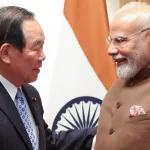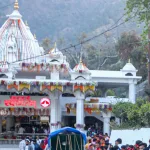Influenza is an important cause of disease (mainly respiratory) and deaths especially in children in India but also other groups like elderly and pregnant females. Influenza season should ideally be recognized in every area, and when possible, the latest available vaccines should be offered about 2 weeks before beginning of the season.Kashmir is a North Zone state.
The Virus
The influenza virus, an orthomyxo virus, is a single-stranded RNA virus. It is capable of causing disease in humans, birds, and animals. There are three types of influenza viruses A, B, and C. The influenza type A causes moderate-to-severe illness in all age groups in humans and other animals. The illness caused by type B is usually a milder disease in humans only and primarily affects children. The illness by type C influenza virus is rarely reported in humans and it does not cause epidemics.
Influenza virus is characterized by frequent mutations—antigenic drifts (minor antigenic change, both A and B) and antigenic shifts (major antigenic change, only A). Vaccines elicit a relatively strain-specific humoral response, have reduced efficacy against antigenically drifted viruses, and are ineffective against unrelated strains. It is of utmost importance, therefore, that vaccine should incorporate the current strain prevalent during that time.
The influenza vaccine is, therefore, unique as the precise composition has to be changed periodically in anticipation of the prevalent influenza strain expected to circulate in a given year. To ensure optimal vaccine efficacy against prevailing strains in both the northern and southern hemispheres, the antigenic composition of the vaccines is revised twice annually and adjusted to the antigenic characteristics of circulating influenza viruses obtained within the World Health Organization (WHO) global influenza surveillance and response system (GISRS).
Indian Scenario
Influenza is an important cause of disease and deaths in children in India. Children may get between 7-8 flu attacks in a year. For many it’s severe and can be associated with death. Both influenza A and B are found circulating in India.
Seasonality of Influenza
Influenza occurs throughout the year, but its incidence has distinct peaks in most geographical areas. Every season’s epidemic or outbreak lasts for 6–8 weeks or longer. Reasons for seasonality are not well known. Effects of humidity and temperature on virus survival and crowding inside home in winters are attributed for seasonality. The start, peak, duration, and size of outbreak in a season cannot be predicted. Virus’s antigenic variation, virulence, and transmissibility make the outbreaks vary each year. Population immunity also affects the severity of outbreak.
In India, influenza season differs in various parts of country. In India, the disease is observed to have two peaks; overall major peak one during the winter (January to March) and a minor peak during the post-monsoon season (August to October). However, it may vary from state to state.
In northern part of India (including kashmir), influenza peak is in January to March which is similar to Northern hemisphere
Influenza Vaccines
Most of the current seasonal influenza vaccines include two influenza strains. A strains and influenza B strain. Globally, trivalent inactivated vaccines (TIVs3) and live attenuated influenza vaccines (LAIVs) are available. In order to enhance immunogenicity, some current formulations of trivalent vaccines include adjuvants. Adjuvanted trivalent influenza vaccines
(aTIVs3) show enhanced priming and boosting, as well as efficacy in infants, although need for two doses remains. The development of quadrivalent inactivated influenza vaccine (QIIV4) formulation for seasonal influenza is of interest in providing comprehensive protection against influenza B viruses.
Inactivated Influenza Vaccines
The IIVs are produced from virus growth in embryonated hen’s eggs and are of three types: (1) Whole virus, (2) Split product, and (3)Subunit surface—antigen formulations. Whole virus vaccines are associated with increased adverse reactions, especially in children and are currently not used. Most influenza vaccines are split-product vaccines, produced from detergent treated, highly-purified influenza virus, or surface antigen vaccines containing purified HA and neuraminidase.
Table 1 provides a list of available influenza vaccines in Indian market.
The trivalent and quadrivalent vaccines contain 15 μg HA of each of WHO recommended two influenza A strains (H1N1 and H3N2) and one/two influenza B strain. Quadrivalent vaccines contain two influenza B strains. Vaccines are licensed for use in children aged 6 months and older.
Duration of protection
Evidence from clinical trials suggests that protection against viruses that are similar antigenically to those contained in the vaccine extends for at least 6–8 months.
Safety of Influenza Vaccines
Transient local reactions at the injection site occur frequently (>1/100), and fever, malaise, myalgia, and other systemic adverse events may affect persons without previous exposure to the influenza vaccine antigens, trivalent influenza vaccines are generally considered safe.
However, the vaccine should preferably be avoided in patients with history of GBS(a kind of paralysing disease). The vaccine should be administered with caution in patients with history of severe egg allergy only if expected benefits outweigh risks.
Recommendations for Use
Individual Use.
Whom to Give?
Influenza vaccines are recommended for:
All Children from 6 months to 5 years of age.
The “high-risk children” aged >5 years including the following:
- Chronic cardiac, pulmonary (excluding asthma), hematologic, Renal (including nephritic syndrome) condition.
- Chronic liver diseases and diabetes mellitus.
- Congenital or acquired immunodeficiency including human Immunodeficiency virus (HIV) infection.
- Children on long-term Aspirin therapy.
- Laboratory personnel and healthcare workers.
Target group prioritization for seasonal influenza vaccination
The prioritization is based on following attributes: Contribution of risk group to the overall influenza disease burden in population, disease severity within individual risk group, and vaccine effectiveness in different age groups and categories.
The WHO position paper states that pregnant women have increased risk of severe disease and death from influenza; the infection may also lead to complications such as stillbirth, neonatal death, preterm delivery, and decreased birth weight.
Pregnant women should be vaccinated with IIV at any stage of pregnancy. This recommendation is based on evidence of a substantial risk of severe disease in this group and evidence that seasonal influenza vaccine is safe throughout pregnancy and effective in preventing influenza in the women as well as in their young infants, in whom the disease burden is also high. Elderly people, individuals with chronic medical conditions, and healthcare providers should receive influenza vaccine on priority.
Which Vaccine to Give?
In those with underlying risk factors, only the inactivated vaccines should be used. In healthy individuals aged 2–49 years, either the inactivated or live attenuated vaccines may be used. In India, since the Live vaccine (LAIV) is currently not available, hence only IIVs (Inactivated) should be used. Both IIV3 and IIV4 are available in India.
When to Give?
Kashmir is a north zone place with peaks between January and March. Best time for vaccination is 2-4 weeks before late December or early January.
DOSE
0.5ML 2 doses for children 6months- 1years of age. 1 dose of 0.5ml for all others
(Author is a paediatrician and has worked with Health dept J&K. He is an alumnus of GMC Srinagar and has passed out his DNB paediatrics from CNBC Delhi and is currently pursuing DM in neonatal medicine. He can be reached at: [email protected] and on twitter @DrSyedAzher)





